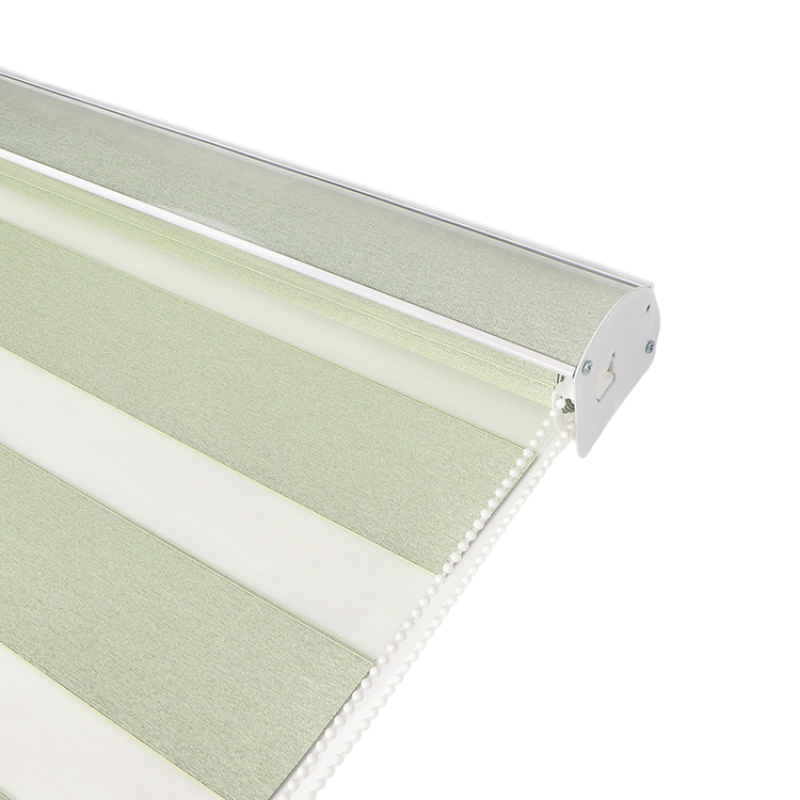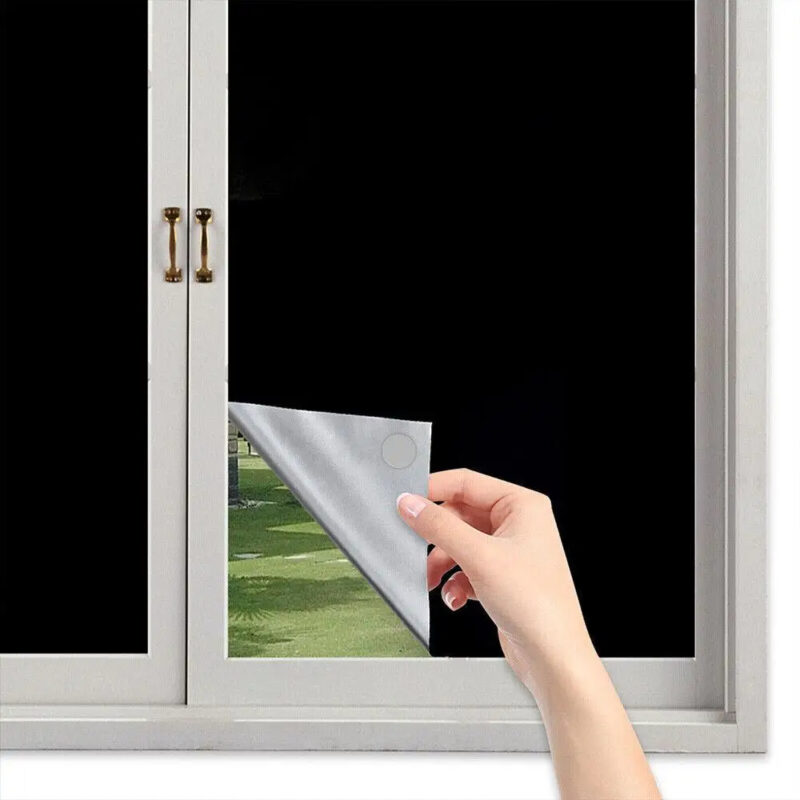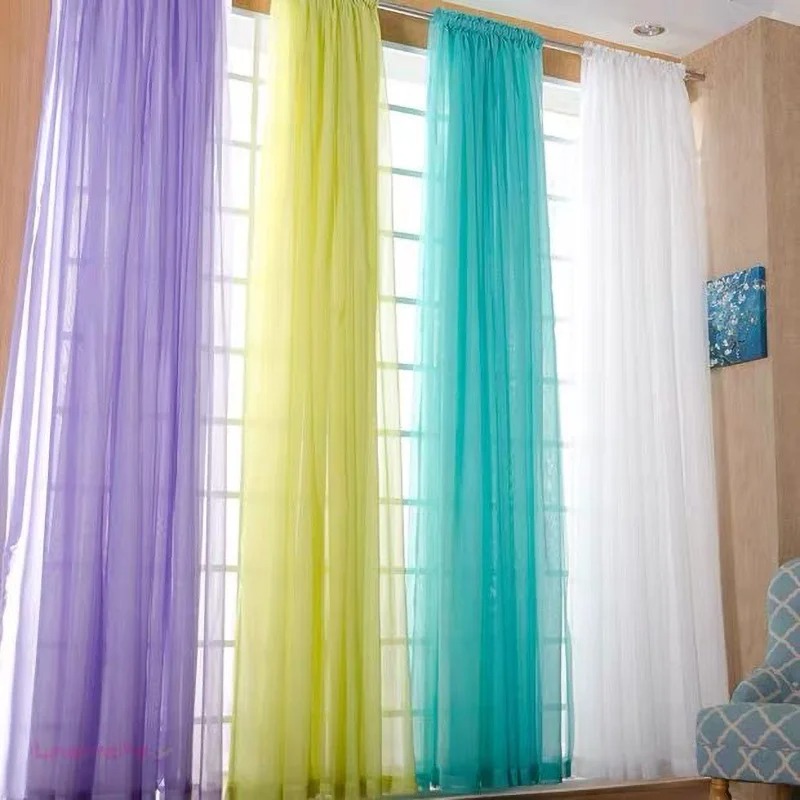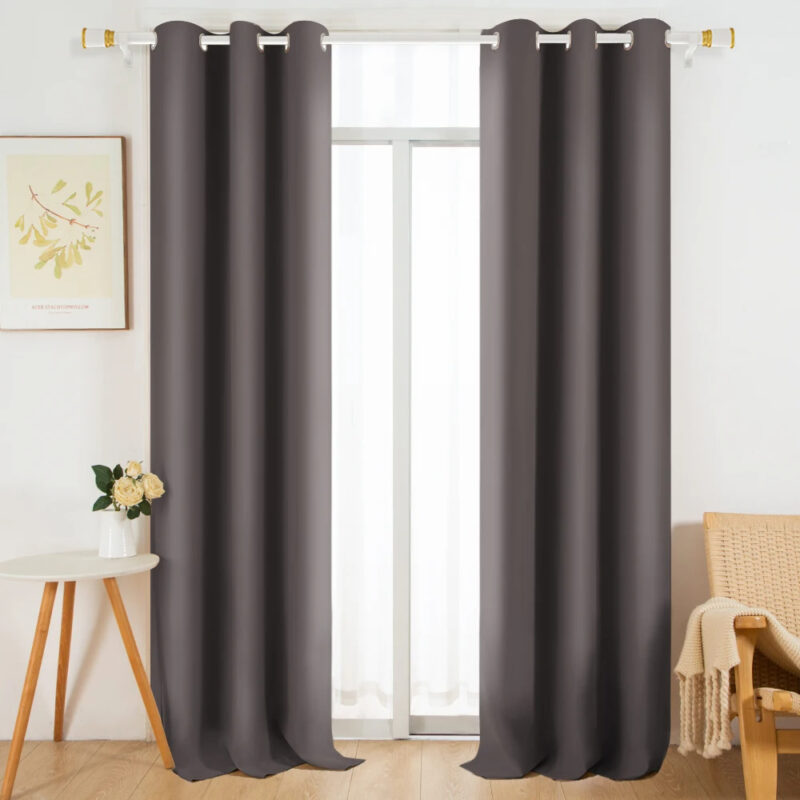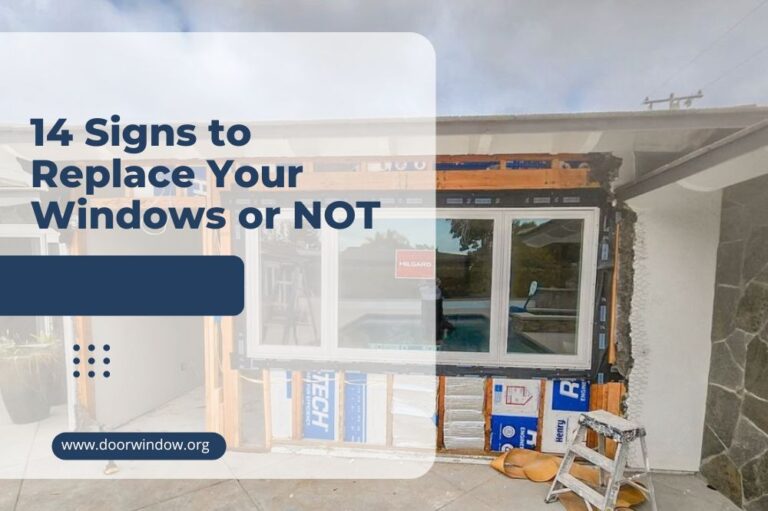How To Measure Standard Window Blind Size? (Easy Steps For Beginners)
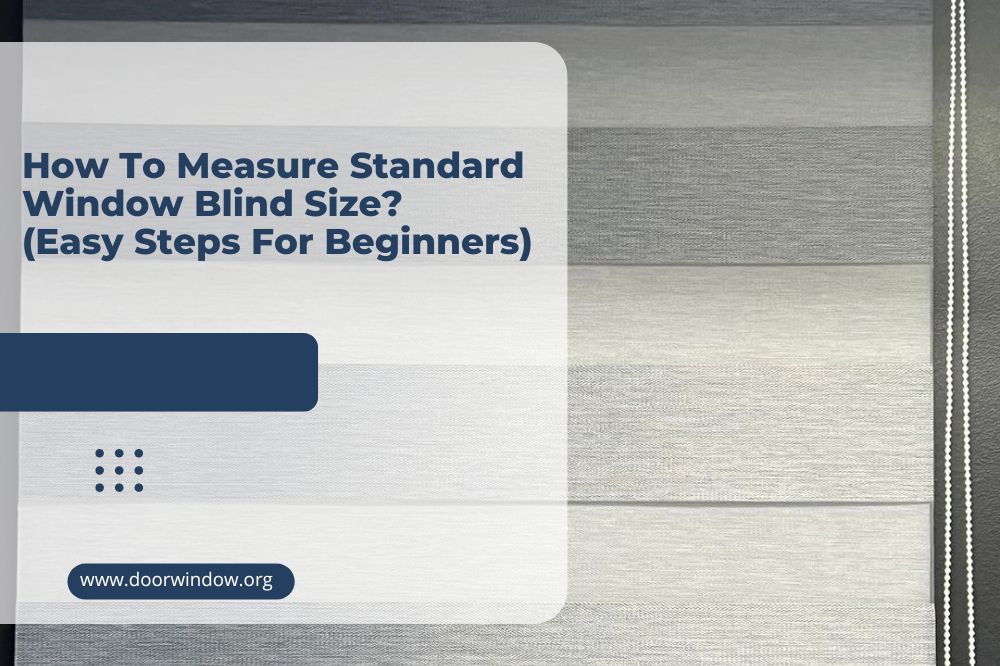
Picking up new blinds, shades, or curtains for your home’s windows sounds like it should be simple but it turns out there are lots of things to consider, measurements to take, and variations to keep track of. Doing all of this properly means the difference between getting the perfect blinds, shades, or curtains for your home or getting something that’s either subpar or outright unsuitable.
So, how should you approach all this? Let’s start with what’s the standard window blind size, how to measure it, and what are the main factors and variations to consider.
How To Measure Standard Window Blind Size?
What is the standard window blind size?
Window blinds can vary greatly in size which is hardly surprising as windows themselves come in all shapes and sizes. The standard length you can expect to see, for example, is anywhere between 36 and 72 inches or 91 to 183 cm whereas the width typically ranges between 24 and 60 inches (61 to 152 cm).
This isn’t to say that you can’t find blinds that go above or below these limits, of course, but, to do so, you’d typically need to get a custom job. That can be annoying and time-consuming, not to mention costly, but it is something necessary when you have an unorthodox window frame and you want bids that still offer good privacy and fit it well.
How to measure for blinds and shades?
Measuring window frames sounds like it should be easy. And it is, if you know the few basic rules about it. For example, one of the first things to consider is whether you want to mount your blinds or shades inside or outside of the frame.
This doesn’t mean indoors or outdoors but it refers to whether the blinds and their gear would be mounted inside the frame and cover only the glass window itself or whether they’d be mounted over and above the frame, and will cover the whole thing. The choice between these two basic options should come before you get anywhere near the measuring tape.
After that, the next thing to consider is what type of blinds you want, as some have different measuring requirements. And there are lots of window blinds options to choose from – there are vertical blinds, wood blinds, Roman shades, roller shades, roller blinds, and countless other types of blinds and shutters.
Each of those types has its own specifics, requires a different window casing depth if it’s going to be mounted inside of the window frame, and so on. To fully delve into the specifics of each type of outside and inside-mount blinds, however, we’d need a separate article for each. So, to start off, let’s go over the differences between inside and outside window blind mounting as that’s always the first step.
Inside vs outside blind mounts
On the face of it, inside vs outside mounts sound similar – you just need to measure different parts of the window. There are other subtler differences too, however. Here’s a quick pros and cons list for both types:
Inside mount pros:
- By only taking the inside of the window frame, these blinds leave space for curtains and drapes to be mounted outside of the frame
- Inside mounting leaves window trim and molding visible which is great if you’re happy with how it looks and you don’t want it to be obstructed
- This mounting method also saves space, which is ideal if there isn’t that much empty wall space around the window
- When mounted correctly, inside-frame blinds create an elegant and orderly look which a lot of people prefer
Inside mount cons:
- Measuring for inside mounts is trickier as everything needs to be precise – a miscalculation of the exact width and length by even half an inch or a single centimeter can make the whole mount either unusable or unappealing
- Not all window frames can have inside mounts as there needs to be enough depth inside the frame for the mounting to fit – a clearance of at least 3 inches from the glass is a must in most cases
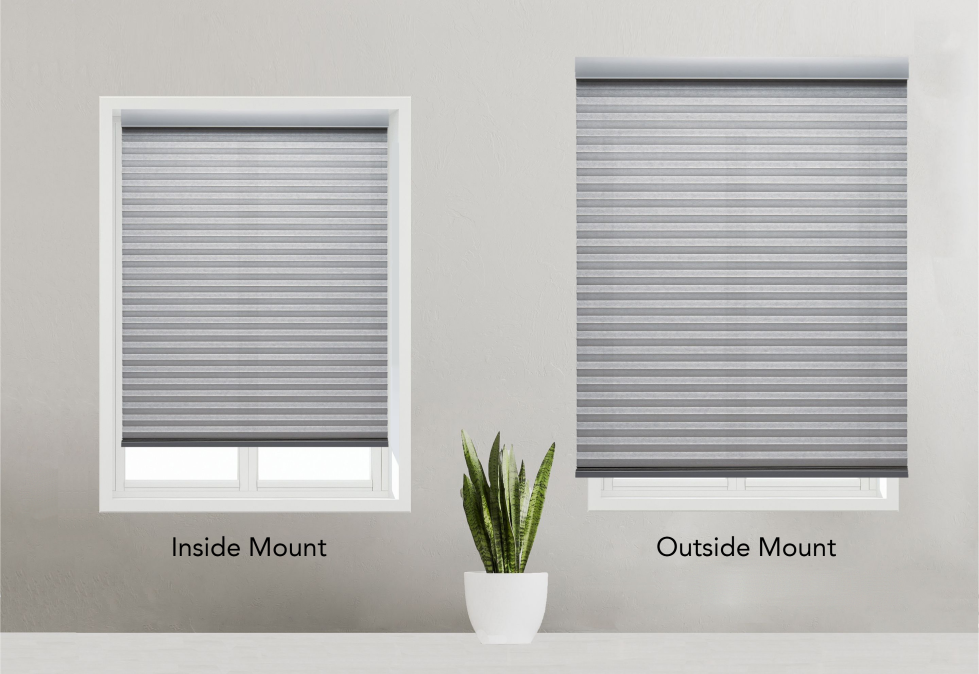
Outside mount pros:
- Great for windows that aren’t all that big as the outside mount makes them seem larger
- Outside mounts are ideal for blocking out light
- Measurements for outside mounts are much easier to take and any variations or mistakes you may make aren’t as crucial
- You can use outside mounts to hide an unattractive window or wall you’d rather not have to deal with in another way
Outside mount cons:
- These mounts hide the window trim which may be a minus for some people
- Outside mounts do make the window appear larger which also isn’t suitable for all walls and situations
Now that we’re aware of the pros and cons of each mounting method, let’s take a look at how you should take measurements for either one:
1. How to measure for inside mounts
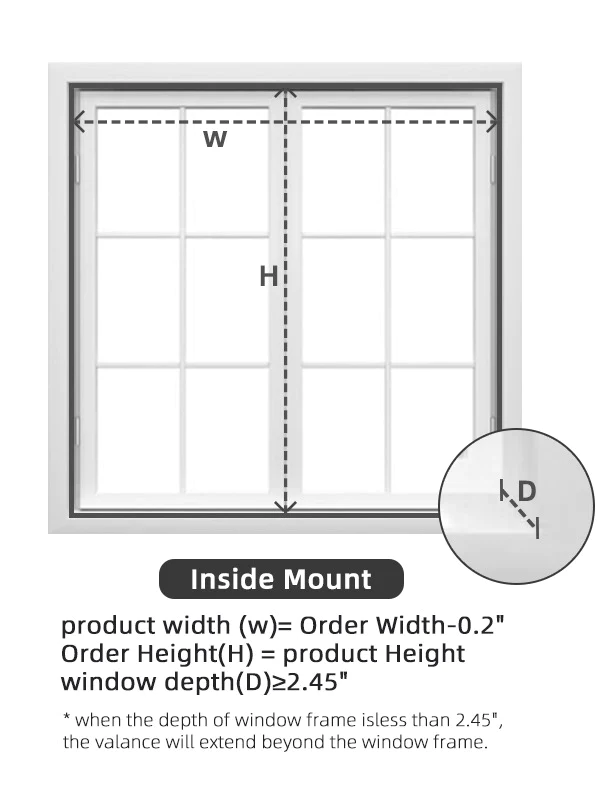
Measuring the window opening for an inside mount is simple but it should be done correctly. You’ll need to get a measuring tape, some paper, and a writing tool, as well as a stepstool or ladder. After that, start measuring each of the following:
- The width of the inside of the window frame in three separate places – at the top, middle, and bottom. It’s important to make sure you’re measuring the inside of the frame and not the outside. Also, if the three widths aren’t the same, which is quite common in some buildings, take the smallest measurement.
- The length of the window should also be measured in three places – the left, middle, and right sides of the frame. Measure from the window sill to the lowest part of the top casing. Again, if the three measurements differ, take the longest one.
- Lastly, measure the depth of the window frame – in particular, the depth of the flat surface of the upper casing as that’s where you’ll attach the mechanical parts of the blinds if the window frame is indeed suitable for inside mounting.
If the depth is lower than 3 inches or 7.5 cm, either consult with a professional or consider an outside mount instead – installing an inside mount properly is crucial for both functionality and durability, it’s not just for looks’ sake.
2. How to measure for outside mounts
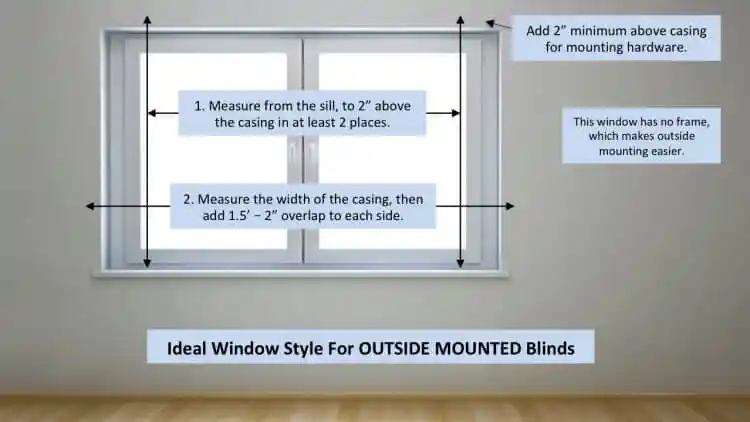
Fortunately, outside-mount blinds are even easier to measure and can work with all window sizes and types. All you need to do here is:
- Measure height from the point above the window frame where you’d want to headrail to be. Keep in mind that the headrail itself will be about 2 inches tall.
From there, just measure down to the bottom of the window sill or even further down below it, depending on how long you want the blinds to be. The longest measurement should usually be about 72 inches or 180 cm, give or take. - The width is even simpler to measure – just see how wide the area is you want to cover with the window shades or blinds. This should include not just the window itself but about 3 or so inches of the wall on either side of the window frame for better privacy.
How to measure for curtains instead of blinds or shades?
For a complete window treatment and light control, you’ll likely want to mount curtains in addition to (or instead of) blinds or shades. The length and width measurement for curtains is similar to that of outside mount blinds – just take the dimensions you’d want to cover with the curtains.
Do keep in mind that you’d be dealing with fabric, however, so, once you’ve measured the width of the area, you’ll need to double it or even multiply it by 2.5 to make sure the curtains will be able to stay partly folded but still cover the whole area.
In conclusion
Proper home improvement takes a lot of steps, some more convoluted than others. Getting a new window blind installation can be one of the quickest parts of the process or one of the more irritating ones, depending on how you approach it. If you pick the right mounting choice and take the blind measurements correctly, however, the rest should be easy.
It’s also worth noting that consulting with a professional is usually not a waste, even if most people are hesitant to do it. Hiring an expert isn’t just going to help you get the right measurements but would also help you pick the right type of blind, shade, curtain, or combination of the three.
And there are indeed lots of options to choose from – wooden blinds for extra warmth and comfort, vertical blinds for large windows on high-rise apartments, aluminum blinds for a cleaner contemporary style, and more.
Shades also come in various styles – the famous Roman shades made out of cotton or silk, woven wood shades that are often made out of grass or bamboo, or solar shades for light control plus a modern style. Add the right type of curtains on top of that and you can fully transform your home with just these couple of little changes.


